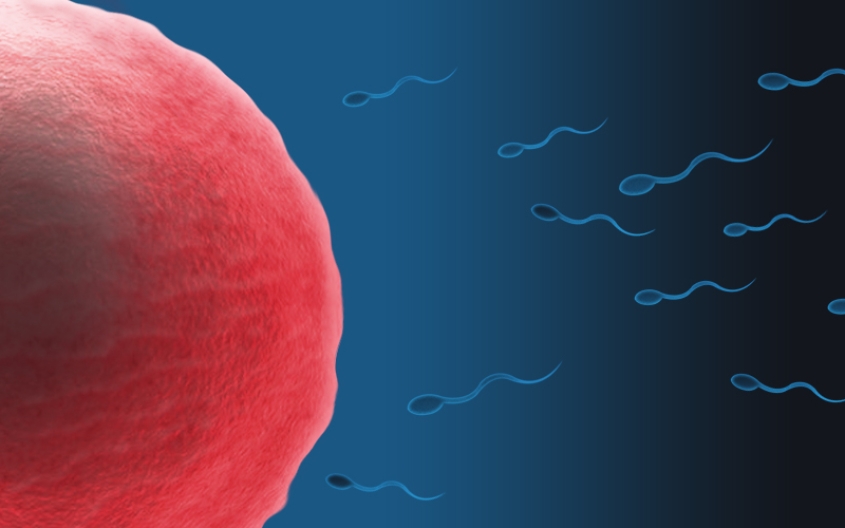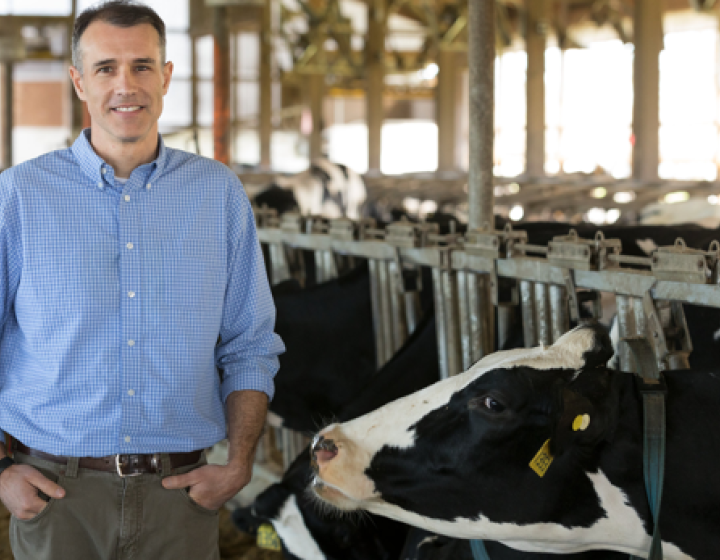Sperm formation step could hold clues to male contraception
A cross-college collaboration is opening new doors in the study of male infertility by breaking down a key step in sperm formation. Isolating the intricacies of meiotic sex chromosome inactivation (MSCI), will now enable researchers to identify what happens when that key step fails.
MSCI is essential for sperm formation, or spermatogenesis, but scientists previously only had a high-level picture of the process. “What we did was add resolution to the process of spermatogenesis. Now, we can study it in detail and understand why spermatogenesis is unsuccessful,” said Paula Cohen, professor of genetics in the Department of Biomedical Sciences in the College of Veterinary Medicine.
Cohen co-led the study, published in the journal eLife, with Marcus Smolka, Interim director of the Weill Institute for Cell and Molecular Biology, and professor in the Department of Molecular Biology and Genetics in the College of Agriculture and Life Sciences.
During MSCI, sex chromosomes are treated differently from other chromosomes: They are temporarily packaged in a structure called sex body, inside which they are silenced, meaning their genes are temporarily turned off. The team discovered that the packaging and the silencing are two distinct processes that can be decoupled.
“Before, we could only see MSCI as one unique process that would either fail or succeed,” Cohen said. “But now it can actually be broken down with silencing of XY and sex body formation as distinct processes.”
Part of the challenge was that MSCI is controlled by a pair of proteins called ATR and TOPBP1, which are involved in many functions besides spermatogenesis. So, when researchers experimentally disrupted ATR, not only did spermatogenesis fail, but hundreds of other proteins were also disrupted, making it impossible to know which one of them controlled MSCI. Similarly, blocking TOPBP1 in sperm-forming cells led to infertility – but exactly why remained unclear.
Taking a more systematic approach, Smolka and his colleagues did not block the whole TOPBP1, but rather disrupted the protein section by section, looking at the effect of each of these modifications one at a time. With one of these disruptions, the team observed that the sex body formation in MSCI progressed normally, but the silencing of X and Y chromosomes did not happen.
“We are opening doors for precision medicine for patients by understanding how specific alterations affect a gene function,” Cohen said.
Implications for contraception, fertility, cancer
Because of the broad range of functions of ATR and TOPBP1, the proteins that control MSCI, these results have far-reaching implications for male contraception, fertility and even cancer treatments.
Besides spermatogenesis, the ATR and TOPBP1 are involved in repairing and protecting the genome against damages, a process that cancer cells harness to survive. “There are dozens of ATR inhibitors currently in clinical trials for cancer therapy,” Smolka said.
In parallel, Smolka wants to understand how cancer therapy impacts a patient’s fertility. “It is not enough to understand how to use these inhibitors in cancer therapy,” he said. “We also need to understand their impact on MSCI and fertility.” This modified version of TOPBP1 recently discover interacts differently with ATR, which will help understand how to manipulate ATR to target cancer cells without affecting fertility.
Excitingly, this knowledge may also be used to target ATR to halt sperm production specifically and reversibly, which could be used as a male contraceptive.
To continue their work on sex chromosome inactivation, the team applied for a grant to explore the role of enzymes called phosphatases that reverse the effect of ATR. “The effects of phosphatases on fertility are little known,” Smolka said. “But that’s also important for reversibility.”
Collaborators on this study include Robert Weiss, professor of molecular genetics in the Department of Biomedical Sciences in CVM, and Andrew Grimson, professor in the Department of Molecular Biology and Genetics in the College of Arts and Sciences.
For Cohen and Smolka, this breakthrough would not have been possible without the multiple teams with different expertise that came together through the R3 interest group – a group of Cornell scientists interested in mechanisms of DNA replication, repair and recombination. “We all work on very different topics, and this is a very interdisciplinary study,” Cohen said. “One thing that Cornell does very well is bringing people together.”
Written by Elodie Smith
A version of this story appears in the Cornell Chronicle





